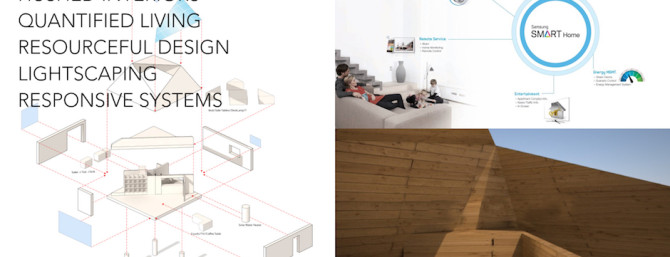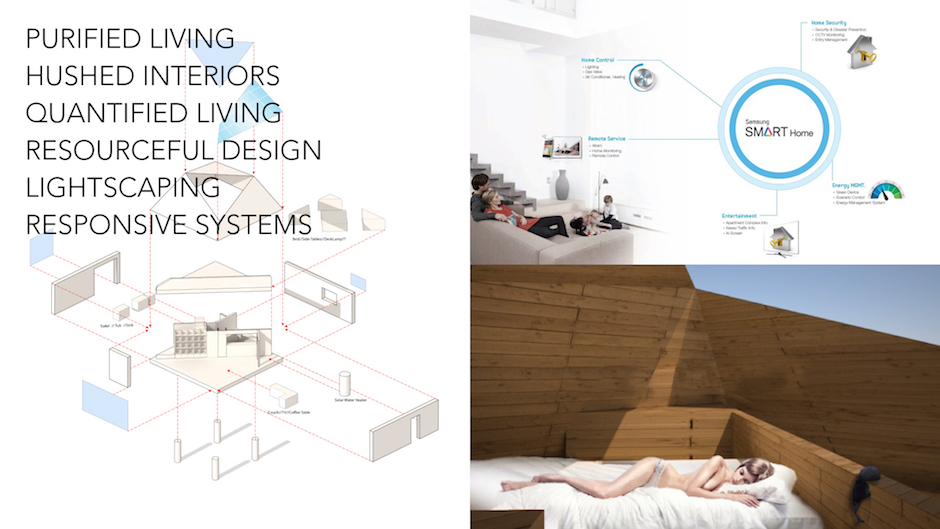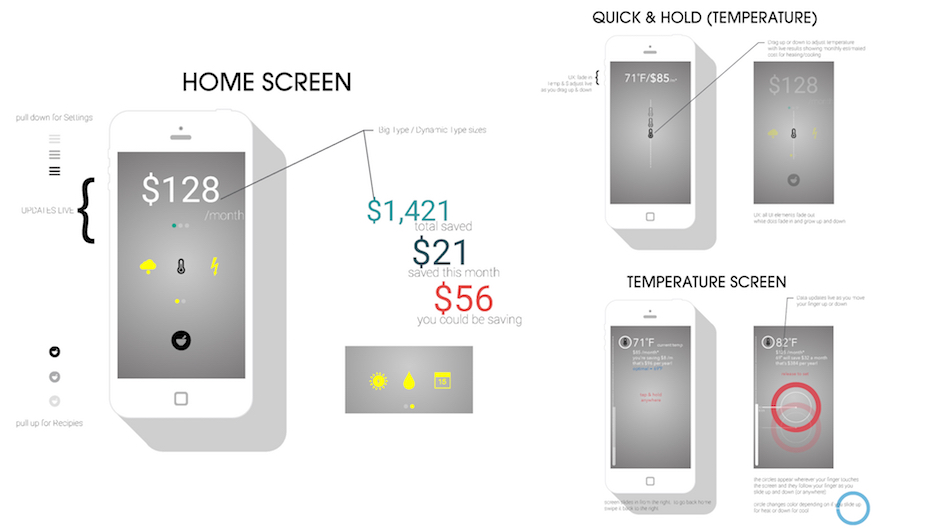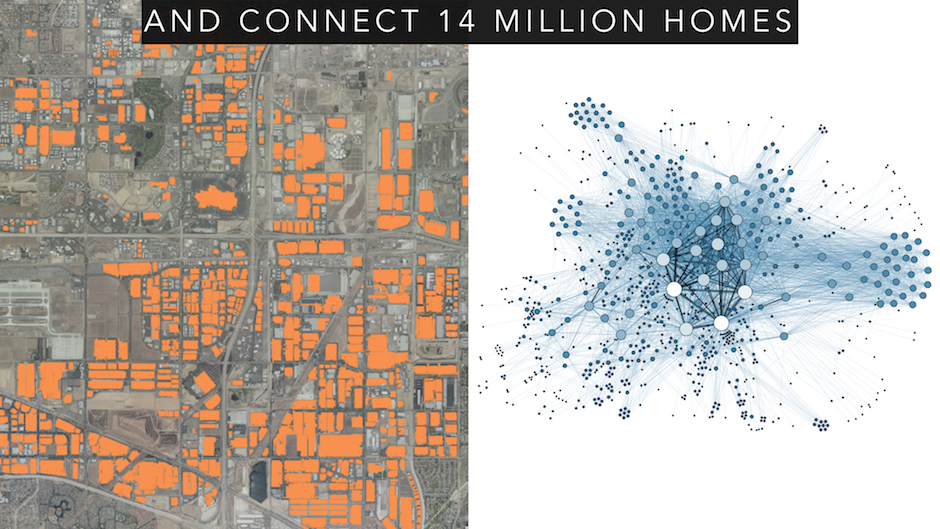Network Connected Homes – aka the Autonomous Home
By Brooks Atwood
October 16, 2015
Network Connected Homes is a smart, pre-fab home research company. Our goal is to advance smart home intelligence and construction methods in a way that is most likely to benefit humanity as a whole by reducing energy and waste while constantly improving through data analytics. This is just a draft, a starting point on which to build a further discussion.
The outcome of this venture is uncertain and the work is difficult, but we believe the goal and structure are right. We hope this is what matters most to our environment, technology and construction.
###
An autonomous home is capable of fulfilling the main functions for a livable, healthy and wellness environment of a traditional home. An autonomous home is capable of sensing its environment and making necessary adjustments without human input.
Autonomous homes sense their surroundings with such technologies as “smart devices” (IOT – internet of things), air quality sensors, energy use and consumption, water use and consumption, sound levels, temperature control, GPS, light therapy/lightscaping and computer vision. Advanced control systems interpret sensory information to identity appropriate controls to maintain an environmentally efficient, healthy and comfortable home that responds to the inhabitants. By definition, autonomous homes are capable of updating their algorithms (or AI) based on sensory input, allowing the homes to keep track of user data, environmental data, energy data, efficiency and overall wellness without input from the user.
Autonomous Home Communication Systems
Individual homes may benefit from information obtained from other homes in the vicinity, especially information relating to energy use and maximizing efficiency. Home communication systems use home units as the communicating nodes in a peer-to-peer network, providing each other with information. As a cooperative approach, home communication systems could help reduce the load on energy, water use, natural resources, carbon footprint, fossil fuels as well as share/distribute stored solar energy and grey water.
• Autonomous Homes are crowdsourced
• uses OTA (over-the-air) updates to push new technology to tens of thousands of homes
• the Home builds a reference of energy use and consumption
• the Home also has up-to-the-minute data on heat gain/loss, solar energy, water & electrical data, air quality, humidity – all of this can help improve materials, passive solar design, home orientation, off-gassing, etc.
Possible Advantages – an increase in the use of autonomous homes would make possible such benefits:
• Reduced carbon footprint and emissions
• Reduced dependence on fossil fuels
• Avoid peak energy times by distributing the load
• Reduce use on non-recyclable or non-sustainable materials
• Reduce overall construction waste
• Ability to truly create the first Smart Home (not just a Convenient Home)
• Purified living, hushed interiors, quantified living, lightscaping, responsive systems
• Remote Service – alarms, home monitoring, remote control
• Home Security – security & disaster prevention, CCTV monitoring, entry management
• Energy management – Green device, scenario control, energy management system
• Entertainment – residential development info, news, traffic, info
• Could reduce home owners insurance or theft due to the homes increased awareness
• Removal of gas/water/electrical meters as this would all be controlled by one central hub and the data sent OTA to all necessary agencies for monitoring and/or billing – this also eliminates the need for meter readers and exterior meters
• Reduction in the overall cost of the house
• Better/smarter more sustainable materials – with the data being collected and analyzed, material research and knowledge will increase and produce more energy efficient materials, cleaner and healthier materials
Possible Developments
• by 2016, plans to build and introduce the world’s first autonomous home(s)
• by 2016, plans to build the world’s first autonomous neighborhood
• by 2017, plans to build the world’s first autonomous housing development of 7,000 homes.
The architecture and construction industry need to think of the home as connected devices, that the way a house should operate, like your cell phone or laptop so you can do improvements over the air. It’s important for climate change and sustainability that the construction industry move to a connected philosophy…it’s kind of off to have a home that’s not connected.
The fact that the Autonomous Home is connected and receives real-time feedback means we can continuously make them smarter. It’s neighborhood intelligence.






